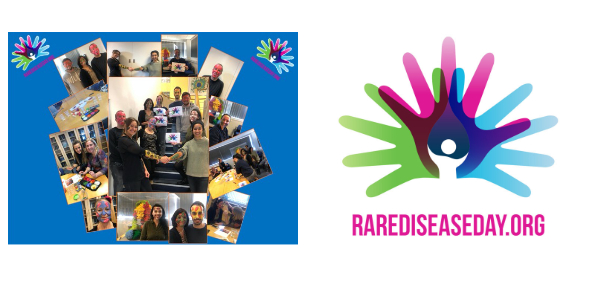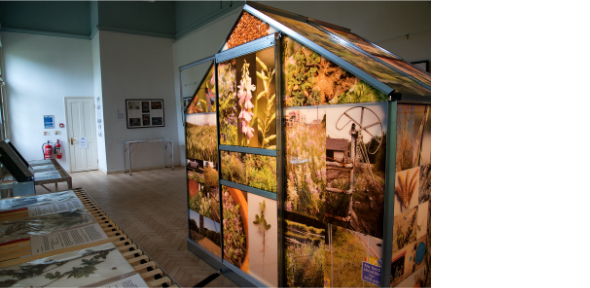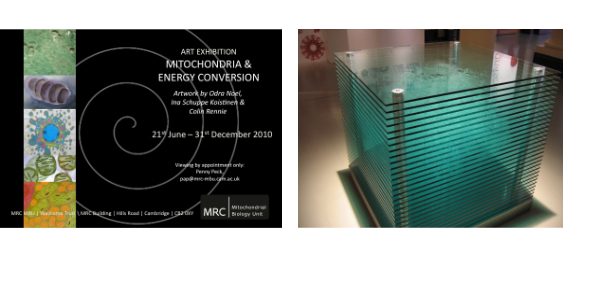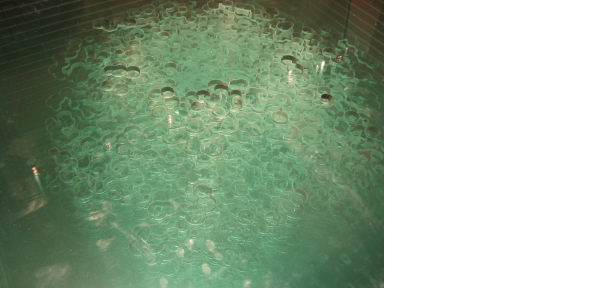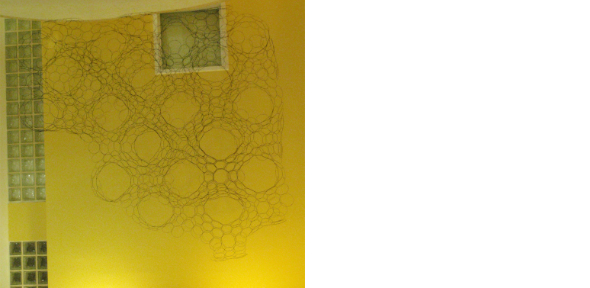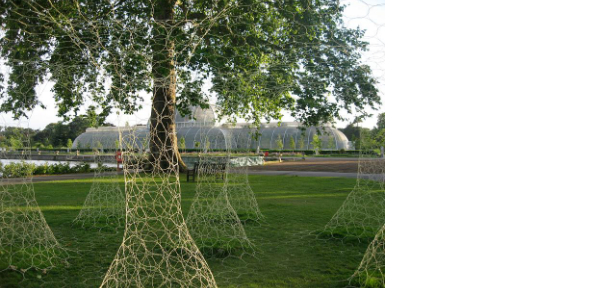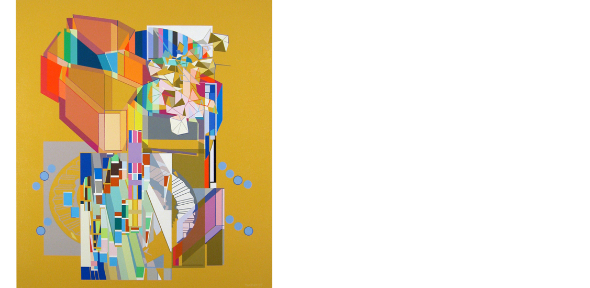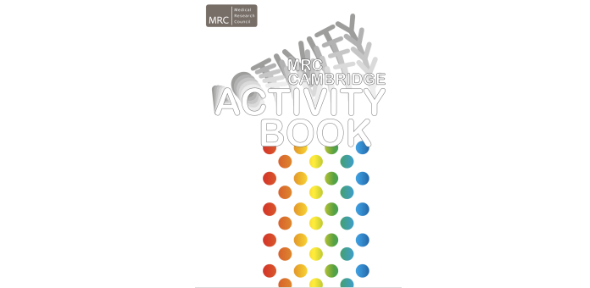The scientific work conducted at the MRC Mitochondrial Biology Unit has served as inspiration for public exhibitions through engagement with artists and designers. Visualization is an integrated part of our research process, and even though we produce state-of-the-art images for scientific use and for journal publications, we strongly believe that through engagement with artists and designers we form valuable ways of making the microscopic world more understandable to a wider public. At the MRC Mitochondrial Biology Unit we are very aware of the importance of artistic interpretation of our scientific ideas and results, and we are highly committed to this kind of public engagement. We have had a considerable degree of success in collaborating with artists and designers, and new projects are regularly planned.
For further information about the activities of the Unit, please contact our Communications Manager, Penny Peck.
Face-painting for Annual Rare Disease Day - 28 February
Rare Disease Day, coordinated by EURORDIS, takes place on 28 February each year to raise awareness with policy makers and the public of rare diseases, and of their impact on the lives of patients.
Rare Disease Day events take place all over the world and the MBU holds annual face-painting events for its members.
7 July 2015: The Fox Got You
The Fox Got You is an art and science project celebrating six common plants which are at the origin of five major medicinal drugs.
Scientists at the MBU collaborated with the photographic artist, Francoise Sergy, whose exhibition was shown at the Oxford Botanic Garden during the summer of 2015.
At a public event on Saturday, 11 July, visitors met the artist and the scientists, clinicians and patients involved in the project, who talked about their work and experiences.
Edmund Kunji represented the MBU and explained the stories behind photographs taken in the Unit.
18 June 2010: Art Exhibition: Mitochondria and Energy Conversion
In June, 2010 the MBU held an art exhibition, featuring the works of three artists. Some of these works were purchased for permanent display in the Unit.
Odra Noel
Odra Noel trained as a doctor at the University of the Basque Country, and gained a PhD in basic science at the University of London. Her research activities exposed her to cell culture, organ dissection, tissue analysis and morphological studies with both optic and electron microscopes. Her preferred art mediums are mosaics, tiles and silks. Her main subjects are healthy human organs and tissues, cell structure and mitochondria. Odra Noel combines scientific work with scientific art creation. Her paintings have been exhibited in research institutions and art galleries. She created the front cover of Dr Nick Lane’s book “Power, Sex and Suicide – Mitochondria and the meaning of life” (2005). She lives in London.
Ina Schuppe Koistinen
In her daily work as a scientist in biomedicine and molecular toxicology Ina Schuppe Koistinen is confronted with questions that often requires long and systematic work. Watercolours encourage spontaneous decisions. In her watercolour series about biology she combines the art and the science. Her paintings on mitochondria have been published in Dr Nick Lane’s book “Power, Sex and Suicide – Mitochondria and the meaning of life” (2005). She lives in Sweden.
Colin Rennie
Colin Rennie is a glass artist from the University of Sunderland. He is well known in the international contemporary glass scene. He has previously been shortlisted for the prestigious Jerwood Applied Arts Prize. Colin Rennie originally made the glass representation of ATP synthase for the Design for Science exhibition at the Nobel Museum in Stockholm. Having plotted the location of each molecule he used a very powerful cutter to pierce and cut each layer of glass. These 30 layers were then stacked in order creating a three-dimensional model of ATP synthase in a cubic metre of glass. Colin Rennie is based in Sunderland.
Further Connection
Odra Noel visited the MBU again on 28 April 2013, when the MBU and the Cambridge Insitute of Medical Research (CIMR), with whom we share the Wellcome Trust/MRC Building, held at private view of Odra Noel's collection.
This exhibition included The Map of Health, which was purchased by The Cambridge Institute for Medical Researach (CIMR) for permanent display in the building.
20 May 2010: Cambridge Science Festival 2010 - Mitochondrial Paint by Numbers
Working together with designers Rachel Wingfield and Mathias Gmachl, we explored new ways of representing the molecular world at this year's Science Festival in Cambridge. We invited people to colour a 2.20 x 6 metre mural of a mitochondrial network. Children of all ages and adults engaged in this mitochondrial paint-by-numbers event. The first step was, via a computer test, to find out which colour each visitor preferred. The mural was divided into 300 hexagons. The areas in each hexagonal were coloured according to shades and numbers, leaving the final image of the mitochondrial network represented by a multi-coloured structure.
The mural was based on images from the Mitochondrial Diseases group. The design was created by Rachel Wingfield and Mathias Gmachl.
30 March 2009: DESIGN4SCIENCE
One of the resources for the Design4Science exhibition, curated by principal lecturer Shirley Wheeler (Faculty of Arts, Design and Media, University of Sunderland), and subsequently displayed at the Medical Museion at the University of Copenhagen, was the scientific results produced by John Walker on the ATP synthase. The exhibition is a mixture of the results from a national (British) design contest, commissions from professional designers, and original work done by scientists ranging from scientific hand drawn illustrations through to three-dimensional imagery. Designers were given the option to respond creatively to one of five important scientific breakthroughs arising from the work of molecular biologists. The internationally acclaimed young glass artist, Colin Rennie, made a representation of ATP synthase. By using a powerful water-jet cutter Rennie recreated the three-dimensional structure of the molecule in a 780-kilogram cube of glass layers measuring 1 metre across.
Travelling around Britain and Scandinavia the exhibition has reached a large and diverse audience.
Nature wrote about Rennie's ATP synthase glass model: "Wandering around the well-known protein and virus models that resulted, one much more recent piece stands out: a dizzying ghost of a protein molecule mounted in a block of glass." (Nature, 2008 452:155)
29 March 2009: G-Loop
Inspired by the structure of the G-Surface or Gyroid a design was made by Loop.pH for the launch of the Mitochondrial Biology Unit on April 1, 2009. The structure was discovered in the early 1960s by Alan Schoen and is commonly found in liquid crystals and polymers and, although being much more periodic, shares one essential characteristic with mitochondria: it describes a complex membrane that elegantly bisects space.
26 March 2009: Metabolic Media
Loop.pH’s artworks investigate how scientific discoveries on a molecular level can be scaled up to architectural dimensions. The three dimensional model or space aids the understanding of complex form and enables a conversation about structure across different fields of art and science. Metabolic Media is the result of a collaboration between John Walker and the designers Rachel Wingfield and Mathias Gmachl, both from the design group Loop.pH. The design is inspired by the making of ATP and the scientific discoveries by John Walker. It is a mixture of woven and modular architectural structures, growing food plants, and solar cells.
Metabolic Media is part of the larger project Nobel Textiles – a larger collaboration between Nobel Laureates and researchers/designers from the University of the Arts London, Central Saint Martins College to create fabrics inspired by the scientific discoveries made by the Nobel Laureates. The work was exhibited as part of London Design Festival during September 2008 at the ICA and Saint James Park.
20 March 2009: Motive Force
Marjorie Mikasen, an American artist who belongs to the “hard-edge” school of acrylic painting, attended a lecture given by John Walker in Lincoln, Nebraska and was inspired by the scientific results in ATP synthase to make the painting “Motive Force”. Marjorie takes her inspiration from science and technology, and her work has been widely exhibited in the United States and has been seen for example, at The Museum of Modern Art (MoMA) in New York.


